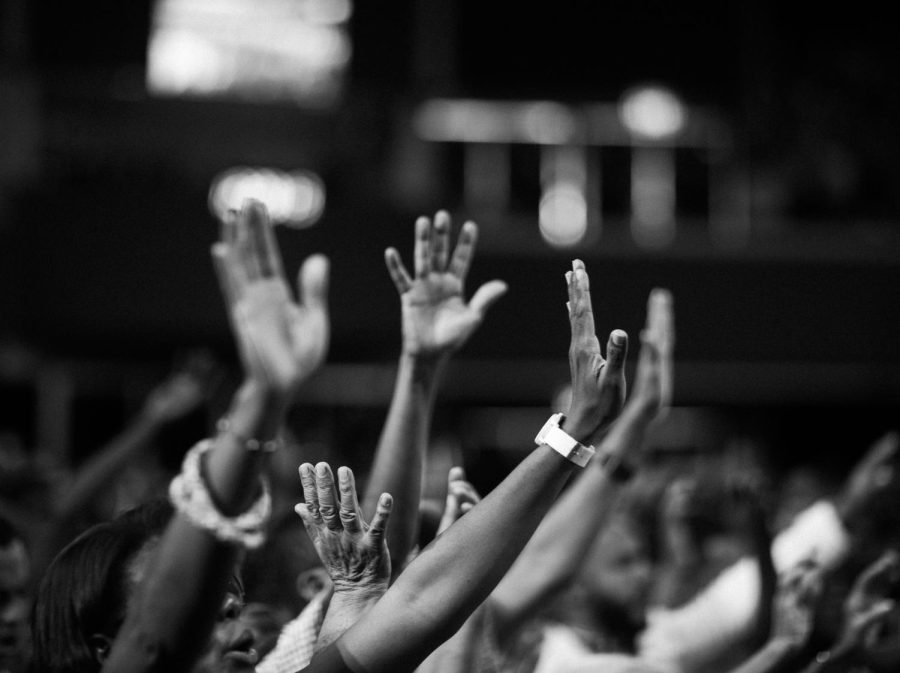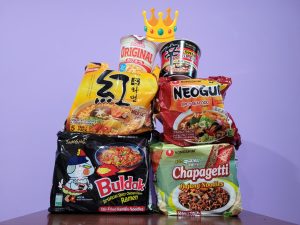Black History Month: The Legacy of African American Music and its Presence at South High
June 6, 2023
From a darkly lit room in Georgia a decade shy of the twentieth century, a deep-throated voice twangs through the crack of a doorframe. Only a strip of lantern light is visible, its kindle flickering from the rawness in Ma “Mother of Blues” Rainey’s singing as she rasps about the romantic, painful, and complicated depths of life as a Black woman in the Deep South.
On a New Orleans riverboat after the turn of the century, the air explodes with improvised riffs and renditions that can only be described as the purest form of cultural collaboration. Alongside a brass band, Louis Armstrong blares his trumpet, painting the stage in colors unthinkable as everything becomes saturated by sound. Multiple instruments clash with one another, reflecting the overlapping influences of Creole and Africa-derived styles that developed the distinctive diversity that is jazz.
Atop urban dance floors across the 1930s, tittering tap shoes adorn the sporadic scatting of Ella Fitzgerald and Billie Holiday. Like its music, the Harlem Renaissance was in full swing after New York became one of the main destinations for African Americans in the Great Migration. Harlem-based nightspots like the Cotton Club and composers like Duke Ellington brought international acclaim for Black musicians to white audiences, sparking wider recognition of African American revival following the aftershocks of Jim Crow segregation and racial violence.
During the daytime streets of the mid-1950s to 1960s, major cities across the U.S. united multi-thousand part choirs in the desire of equality, empowerment, and progress. The oral tradition of protest songs sung by slaves in plantation work songs and field calls continue in contemporary forms, now encompassing the Civil Rights Movement. Spirituals, gospels, and ballads alloyed with blues, R&B, and soul to create freedom anthems that caught the attention of anyone with two ears.
In the years following the momentum of the 1960s, the spirit of social and political change extended to passionate jazz-blues, R&B, and pop styles rooted in gospel hymns. Dubbed “soul,” Aretha “Queen of Soul” Franklin belted hopeful progressive themes with gusto, effectively pioneering the genre with her voice that soared above audiences’ heads. Its powerful, self-respecting lyrics and Black pride directly spoke to the new generation of young African Americans. Soul became closely associated with modern African American culture, such as the arts, fashion, cuisine, and vernacular.
Soon after 1970, inner-city African American and Afro-Caribbean communities began reciting poetry about the presence of poverty, drugs, and gang violence. The Bronx block party scene erupted with pre-recorded instrumental tracks and rappers who gave hip-hop culture its most iconic artistic expression. Its distinctive lyricism bridged repartee-like speech and lively singing with stressed flows and socio-political matters. Original DJ talents Kool Herc and Grandmaster Flash laid the foundation for MC talents the Sugarhill Gang and Kurtis Blow to reach mainstream music. From the 1970s onward, rap entered its golden era in the mid-1980s to 1990s, then exploding into the twenty-first century. Old school to new school flows by Hall of Fame hip-hop artists Public Enemy, The Notorious B.I.G., LL Cool J, Jay-Z, and 2Pac, as well as deserving talents Wu-Tang Clan, Queen Latifah, Dr. Dre, Snoop Dogg, and Ice Cube, preceded current sensations Drake, Kendrick Lamar, J. Cole, Travis Scott, Lil Uzi Vert, Nicki Minaj, Meghan Thee Stallion, Cardi B, and thousands more.
At South High, the legacy of Black history is demonstrated through its musical presence across our headphones, streaming platforms, and hallway playlists. According to “Let the Music Play: South High Preferences and Playlists” by The Southerner’s Alexis Dorf, one third of students listen to pop music and one fifth of students listen to rap and R&B. Additionally, six of the top ten surveyed artists—Kanye West, Tyler, the Creator, Drake, Lil Tjay, and Frank Ocean—are ranked three-hundred or above on Spotify.
“I think Black music has exploded in the last century,” Kalli Zhu, a sophomore whose favorite musicians are Kendrick Lamar, BROCKHAMPTON, and Childish Gambino, says.
To her, lyrics constitute a huge part of the impact. She continues, “The thing I like about rap music is that there’s a lot of meaning that could be condensed in three minutes. They experiment with a lot of wordplay, rhyming, assonance, and double entendres. Sometimes I just read the lyrics and think about what it means. Reading them can also lead you to find so many hidden meanings and other layers.”
Sophomore Emily Sang also appreciates the significance of a song’s content, particularly from rising Houston rapper Aaron May: “I feel like he speaks to me the most when I’m going to situations that I can relate to his music.”
Many other student responses share a common reaction that the music “sounds good to my ears” or “makes me want to dance.” Favored artists range from R&B singer Brent Faiyaz to jazz vocalist Ella Fitzgerald to BTS rapper RM.
Sophomore Adreen Houssain, an avid K-pop listener, explains, “Because western pop music was so heavily influenced by blues music, which came from African Americans, then K-pop was too. In most K-pop groups now, there’s usually someone with a rapper role.”
“You can really see how it has spread everywhere,” Kalli adds.
The worldwide and mainstream acclaim of African American music reflects its past, such as how the integration of rap in K-pop mirrors the cultural blending of jazz or how hip-hop lyrics are derived from revolutionary era rhetoric. Being a creative form that continues today, Black history persists through a musical legacy of enduring life and vitality that will remain forever ubiquitous.






